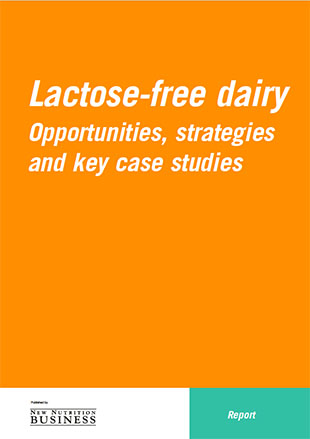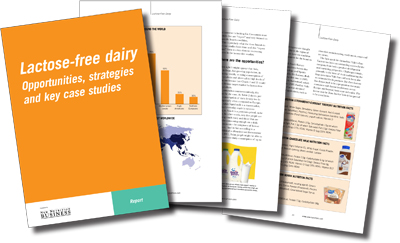Price (PDF):
US$530 £320 €400 NZ$630 AU$570 ¥550000
Add to cart

The growing success of lactose-free brands, particularly in Europe, illustrates the power of serving a niche in the right way. Only 5%-10% of Europeans are lactose-intolerant, but lactose-free dairy brands enjoy loyal customers who are willing to pay premium prices – usually a 100% premium to regular products. This 32-page report sets out the seven steps to creating a lactose-free dairy brand, explores opportunities in Europe, the US and Asia (where up to 95% of consumers are lactose-intolerant), and covers the leading lactose-free brands in three detailed case studies.
About this report
Most adults in the world are lactose intolerant, although the prevalence varies widely from low levels of lactose intolerance in Europe (around 10%) to as many as 95% of Chinese people.Yet surprisingly, over the past five years it is Europe that has been the fastest-growing market for lactose-free dairy.
Growth rates and forecasts: This report estimates the size of the current market and forecasts growth out to 2016. It is Europe that is likely to remain the fastest-growing market for the next five years. The report explores why the Asian market – though growing fast – still lags Europe and may continue to do so.
Strategy and case studies: Using detailed Case Studies of Valio’s Zero Lactose, Arla’s Lactofree and McNeil’s Lactaid, the report sets out the seven steps to creating a lactose-free dairy brand.
Lactose-free dairy enjoys a profitable niche: The growing success of lactose-free brands including Valio’s Zero Lactose and Arla’s Lactofree illustrates the power of serving a niche in the right way. Niches of consumers can be loyal, premium-priced and very profitable.
The service opportunity: The medical statistics on lactose intolerance in fact underestimate the size of the opportunity. Beyond the medically-diagnosed lactose intolerant, there is a much larger group of self-diagnosers – possibly twice as many as the medically diagnosed – who become loyal to brands that provide services alongside the brand that help them with their health concerns.


